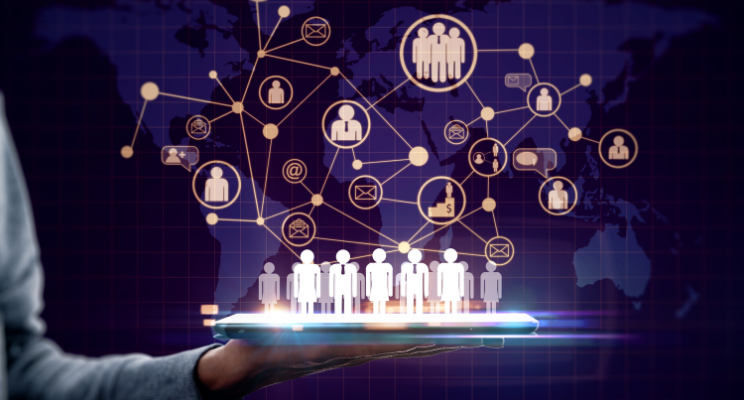Physical Address
304 North Cardinal St.
Dorchester Center, MA 02124
Physical Address
304 North Cardinal St.
Dorchester Center, MA 02124

Discover how AI in HR is revolutionizing recruitment, employee engagement, and workforce planning. Learn how companies use AI-powered HR tools to automate tasks, reduce bias, and boost efficiency.
AI in HR seems exciting in theory. In reality? It truly is a game-changer. Businesses are using AI to address real issues, such as tedious resume screenings, disgruntled workers, and challenging compliance issues, rather than merely “exploring” it for HR. Additionally, they’re doing it more quickly, intelligently, and, to be honest, humanely.
Let’s look at how companies are currently, not in the distant future, utilizing AI to revolutionize human resources.
Even small and mid-sized businesses are incorporating AI into HR operations, even though large corporations are frequently at the forefront of this trend. AI has already been used by businesses like IBM, Siemens, and Unilever to improve workforce analytics, increase engagement, and expedite hiring.
Here are a few instances of AI in action from real life:
These success stories reveal how AI isn’t just a futuristic concept—it’s a current competitive advantage.
Even with its benefits, incorporating AI into HR processes is not without its difficulties. The main challenges that many HR teams encounter are listed below:
Although many HR departments rely on unstructured data and legacy systems, AI thrives on data. It may take a while to integrate these systems with AI platforms. AI results can be deceptive or biased in the absence of precise, up-to-date data.
AI adoption may be resisted by HR departments and staff members out of concerns about losing their jobs or control. Indeed, more than 67% of workers are worried about AI taking over their jobs, according to a PwC study.
AI can lessen human bias, but if it is trained on faulty datasets, it can also reinforce preexisting biases. For this reason, businesses need to keep a careful eye on how transparent and equitable AI-driven decisions are.
There are stringent legal requirements when handling employee data. HR departments are responsible for making sure AI platforms adhere to laws such as India’s Digital Personal Data Protection Act and the General Data Protection Regulation (GDPR).
Businesses must approach AI implementation with a clear strategy if they want to reap the full benefits of this technology. The following are some recommended practices:
Start with a single use case, such as automating resume screening or utilizing chatbots to answer candidate questions, rather than completely redesigning your HR system. Conversational AI tools for hiring automation are available on platforms such as Paradox.
Involve stakeholders in HR, legal, compliance, and IT right away. This guarantees a more seamless rollout of security, compliance checks, and integration.
Teach your human resources staff to collaborate with AI. It is essential to upskill in areas like data analysis, AI literacy, and moral decision-making. Specialized HR technology courses are available on platforms such as Coursera and LinkedIn Learning.
AI should support human decision-making, not take its place. Maintain human control over sensitive interactions, performance reviews, and final hiring decisions.
Measure AI efficacy using performance indicators such as time-to-hire, cost-per-hire, and employee retention. Regularly update your systems with new data and fine-tune algorithms for improved results.
HR leaders should keep current with new artificial intelligence trends if they are to remain competitive, including:
Expect a change in HR functions from automation to human-centered augmentation as artificial intelligence develops.
AI implementation in HR is not a simple process; it calls for careful planning, moral supervision, and interdepartmental cooperation. AI, however, has the potential to transform HR from a support function to a strategic force.
Now is the time to embrace AI with a clear roadmap, regardless of your goals—whether they are to increase hiring speed, enhance employee engagement, or make data-driven workforce decisions.
Do you want to integrate AI into your human resources procedures? Examine the top digital channels to begin your metamorphosis.